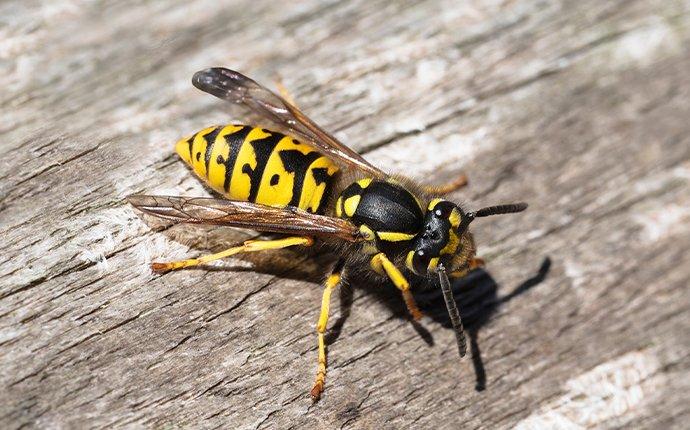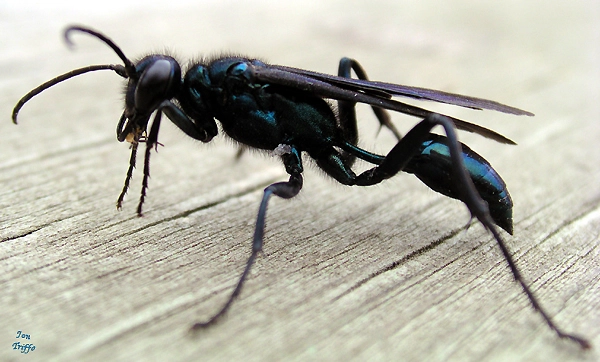Wasps
What are wasps?
Wasps are dangerous, territorial insects that we, unfortunately, find more often than we would like in our Utah yards. They find their way into our yards because they offer the wasps multiple sources of food, water sources, and, of course, safe areas of shelter.
Wasps become the biggest problem for people when they decide to make a nest in a high traffic area of our yard. Having wasps and people active in the same area is a recipe for disaster. Wasps tend to view anything walking too close to their nesting sites as a threat. Their presence in our yards can significantly reduce our ability to enjoy our outdoor spaces.
In Utah, we have to guard our properties against many different species of wasps, including:
Hornets
Hornets are a number of comparatively large wasps that are generally classified by two things: distinctive brown and yellow markings, and a distinctively painful sting for anyone unfortunate enough to get in their way.


Ground Bees
Unlike most bees, ground bees live underground in nests made of conical piles of dirt with a hole in the middle allowing them to come and go. While they can be beneficial to a garden and generally aren’t very aggressive, they can still be a shocking and unwelcome presence when stepping outside.
Paper Wasps
Paper wasps are mostly brown with yellow markings on their abdomens and the tips of their six feet. They are named for their nests, paper-like hives that resemble umbrellas. These nests are commonly found on trees and around the roofline, which unfortunately puts the homeowner within close proximity of these territorial pests.


Yellow Jackets
Yellow jackets are small wasps with distinguishable yellow and black coloration, mostly yellow where other wasps are brown or black. They are fiercely territorial and will attack any person or animal that (knowingly or accidentally) wanders too close to their underground nests.
Mud Daubers/Dirt Daubers
Mud and dirt daubers are large brown wasps that are comparatively docile in nature and typically appear sometime in the summer months. These wasps are named for the tube structures they leave on the sides of trees and structures that resemble chutes. They typically do not sting unless severely disturbed.


Carpenter Bees
Carpenter bees are a category of their own within bees. They are large and black in coloration, about an inch long, and look very similar to bumblebees except the carpenter bee’s abdomen is shiny and black instead of yellow.
Carpenter bees are the only type of bee that makes their nests in wood. Carpenter bees do not eat wood, but they do bore holes into the wood, make nests there, and then lay their eggs. Unlike other species of bees, carpenter bees do not live in colonies. Carpenter bees are less likely to sting humans, but can cause devastating damage to homes.
